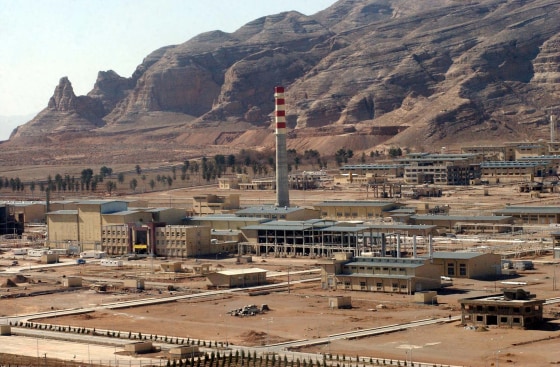Missing uranium and shattered dreams: Why Iran could be more dangerous now
Expert warns Iran's weakened conventional defenses may accelerate nuclear weapons pursuit as regime seeks new deterrent capabilities. Iran's nuclear weapons potential doesn't depend exclusively on large-scale industrial infrastructure.

Strike results on Iranian nuclear facilities have ignited an open political-media confrontation across the United States. While American media outlets – alongside Democratic Party officials – question the extent of damage inflicted, the current administration maintains that Iran's nuclear program has been "destroyed."

The impact of the strike by US forces on Fordo on June 22, 2025
Beyond America's domestic political warfare and presidential credibility concerns, two key motivations drive the White House determination to establish the narrative that Iran's nuclear capabilities were completely eliminated. The first serves as strategic positioning for future negotiations with Iran, essentially declaring that since Iran cannot currently enrich uranium, they shouldn't expect authorization for such activities under any new agreement. The second motivation, potentially more troubling, reflects White House reluctance to continue addressing this complex issue.
What does ground reality reveal? The sobering premise for this analysis must acknowledge that definitive conclusions remain premature, and generally speaking – these matters involve far more classified than public information. However, research institute satellite imagery analysis enables identification of substantial damage across core elements of Iran's nuclear infrastructure including the expansive enrichment industry covering Natanz and Fordo facilities plus centrifuge manufacturing capabilities; the scientists, installations and knowledge repositories comprising the "weapons group"; and Isfahan's conversion and processing installations, representing crucial bottlenecks in the nuclear fuel cycle. Nevertheless, the whereabouts of over 400 kg of 60%-enriched uranium – quantities theoretically sufficient for ten nuclear weapons following additional enrichment – remains unknown.
"Months until resumed production"
Rafael Grossi, International Atomic Energy Agency director-general, stated during this week's interview that Iran could "within several months" restart enriched uranium production. Anyone dismayed by this assessment overlooks the massive scope of Iran's pre-strike nuclear infrastructure encompassing complete production chain mastery from uranium mining through multi-stage enrichment processes – plus advancement in explosive device development. This represents extensive industrial capacity and profound, autonomous expertise cultivated across multiple decades.
The Institute for Science and International Security, headed by Iranian nuclear expert David Albright, released comprehensive post-conflict damage assessments based on satellite imagery analysis. This report, consistent with IAEA findings and substantially supporting Israeli intelligence assessments, demonstrates significant infrastructure damage.
At Natanz, housing approximately 18,000 centrifuges and serving as Iran's enrichment headquarters, widespread destruction is evident. Surface structures sustained damage during Israel's initial attacks, including facilities producing 60%-grade highly enriched uranium. The IAEA similarly concluded that centrifuges within underground enrichment chambers suffered damage or destruction from electrical grid disruption. Subsequent American bombardments reportedly struck these underground chambers directly.
Concerning Fordo, the heavily fortified installation featuring roughly 2,700 centrifuges that dominated headlines since hostilities commenced, the Institute for Science and International Security concludes the "facility likely sustained severe damage or destruction," though American media suggests more limited impact. Recent satellite photography reveals intensive Iranian engineering operations around blast craters, including heavy machinery and material transport equipment, apparently attempting to penetrate the underground complex for damage assessment purposes.

Iran's Uranium Conversion Facility, just outside the city of Isfahan.
Isfahan's uranium processing facilities, constituting critical "chokepoints" between civilian and weapons programs, saw destruction of metallic uranium production buildings – essential links converting enriched gas into bomb cores. Infrastructure converting processed uranium ("yellowcake") into gas supplied to centrifuges also sustained damage. The IAEA confirmed "extensive destruction," including storage buildings previously housing 20% and 60%-enriched uranium, though material quantities present during bombardment remain unclear.
Regarding the weapons development group, representing Iran's most classified nuclear activities, Israeli operations eliminated over 14 nuclear scientists directly engaged in this work. Several individuals, including Freidoun Abbasi and Mohammad Tehranji, appeared on Tehran memorial billboards recently and received state funeral honors alongside regime leadership.
"They preserved this capability as organizational infrastructure for two decades," explains Avner Vilan, specialist in Iran's nuclear program, "but claiming no capable 30-year-old exists in Iran who could replicate this work? I'm certain such individuals exist." Furthermore, Villen expresses concern, stating he "wouldn't be surprised if another weapons group we never identified was operating parallel programs unknown to us."
Protecting gains
The critical question involves uranium stockpiles enriched to 60% – exceeding 400 kg, which Iran announced on the conflict's opening day they had secured through "protective measures." American officials claim this material lies "buried beneath debris" or "wasn't targeted during strikes." Israeli Prime Minister Benjamin Netanyahu alluded to "compelling intelligence" regarding stockpile locations, while IDF officials decline to deny possessing such information.
Iran's industrial nuclear program undoubtedly sustained severe damage, potentially requiring years for reconstruction as Washington and Jerusalem officials describe. However, Iran's nuclear weapons potential doesn't depend exclusively on large-scale industrial infrastructure but could emerge from smaller enrichment capabilities, metallic conversion facilities, and previous advancement – possibly concealed – in explosive device engineering.
"They observe what befell Kim Jong Un and Muammar Qaddafi's fate," Vilan explains regarding Iran's renewed nuclear motivation. "Unquestionably, Iran currently possesses extremely strong incentives for acquiring nuclear weapons and will accept significantly greater risks pursuing this objective." According to his analysis, recent strikes eliminated the regime's dual defensive layers – proxy forces and missile arsenals – "essentially leaving only nuclear capabilities as their insurance policy."
Vilan cautions about the primary threat, warning that "unless we force the regime into submission, their likelihood of developing nuclear weapons increased rather than decreased following these strikes." Essentially, Israel may confront another critical juncture resembling pre-strike circumstances. This doesn't invalidate the operation's necessity or necessarily diminish its accomplishments, but indicates Israel now faces requirements to consolidate its strategic objectives.

2 comments:
Assuming the uranium is actually missing.
This entire article is based on opinions and assumptions. Sort of like, "If my Aunt had Balls she would be my Uncle."
Post a Comment